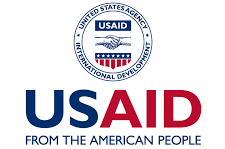Recent moves by the Trump administration have dramatically reshaped global health aid cuts, triggering a financing crisis that could jeopardize lifesaving services in many low- and middle-income countries (LMICs). The US, which supplies roughly $12.4 billion annually for global health, with about 70 per cent as bilateral aid, is curtailing support.
This reduction has left a gaping hole, especially for 26 countries that are both highly exposed to these cuts and severely fiscally constrained.
Health aid cuts with dire consequences
An estimate indicates that 37 out of the 87 LMICs are ‘highly exposed’ to cuts in global health aid meaning that the US funding in those countries is more than 10% of the domestic government health spending. Within this group, 26 countries have a particular problem because they receive heavy US bilateral aid but also do not have good fiscal capacity.
These 26 countries, which have a total of 1.38 billion people, receive 3.4 billion worth of assistance from the United States. Spending US dollars overseas tends to negatively impact the economy.
Charity 101: The world’s 10 oldest charity organizations: Nine centuries of compassion and service
In some instances, the aid surpasses government spending for health by 300%, a prime example being Afghanistan where US funds abused domestic resources.
Over the last few years, the allocation of American health funds has changed dramatically to the point at which it surpasses assistance to other countries. Paired with the consequences of the pandemic, American health clinics are now rather dysfunctional.
Coming from aids, antiretroviral therapy, lung infection care, and maternal medicine are in great danger.
“A temporary dip in finances can cost lives,” said one expert, emphasizing the dwindling health infrastructure in those nations.
Moreover, there are unconfirmed reports that European aid suppliers are also slashing their funding. A considerable number of LMICs are under piles of unjustifiable debt which worsens the situation.
Exploring options for a resilient future
There are multiple possible actions to lessen the impact. First, there is the possibility that certain countries can be encouraged to use some of their internal resources, which might include debt forgiveness or an increase in grants and subsidized loans from the World Bank.
The COVID pandemic showed us that emergency debt relief was able to free up resources that were direly needed. We can do something similar now as well.
A second option can be other donors like foundations, bilateral agencies, and multilateral institutions to try and fill some of this gap. The challenge to address, however, is the scale and speed with which the US’s $8.5 billion bilateral contribution would have to be matched.
What international professionals recommend is either spending that has been allocated for future use or even using emergency spending rules as an interim measure. This approach comes with the price of establishing a tendency to rely on volatile donors for funding.
“Right now, poor short-term choices will dictate the next decade’s global health funding structure,” one policy advisor pointed out.
The global community has a responsibility to create a robust, collaborative funding structure that minimizes dependence on single donors to guarantee basic healthcare to the most vulnerable people around the globe.


